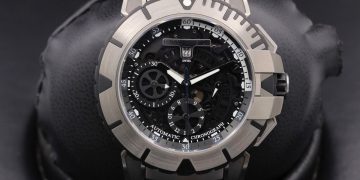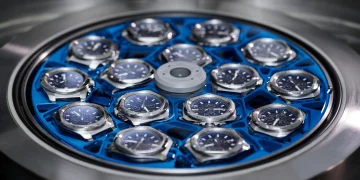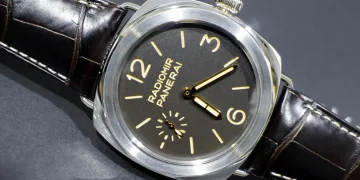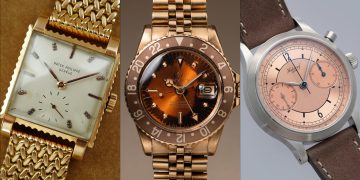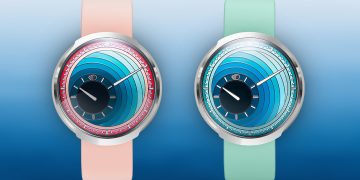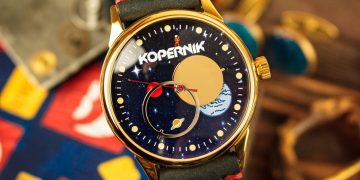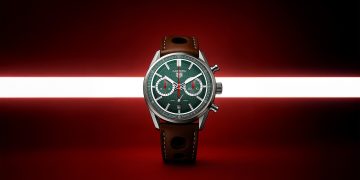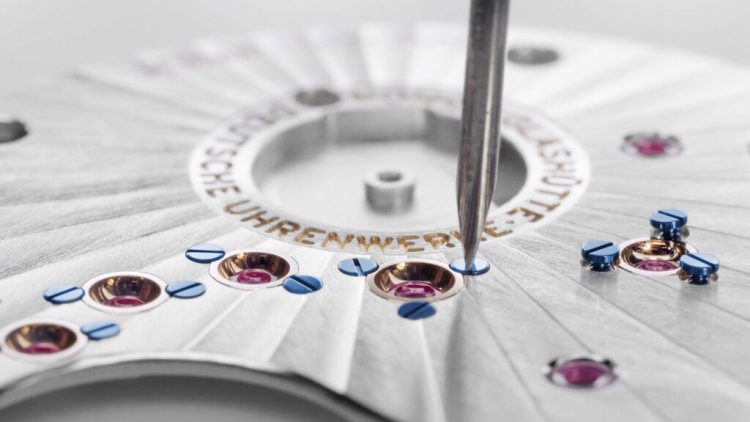Introduction:
The world of horology has always been defined by its precision, craftsmanship, and mechanical ingenuity. For centuries, mechanical watches have been revered for their artistry and the remarkable skill required to create them. However, as the digital age has progressed, the rise of smartwatches has brought a new dimension to the watch industry, blending technology with timekeeping in ways previously unimaginable. These watches offer functionalities such as fitness tracking, heart rate monitoring, and notifications, changing the way people interact with their timepieces.
Today, the intersection of mechanical watches and smart technology has become one of the most exciting and transformative trends in the watchmaking industry. The question arises: Will the integration of mechanical and smart watches shape the future of watchmaking trends? Can these two worlds—one rooted in centuries-old tradition and the other in cutting-edge innovation—come together to redefine the future of timepieces?
In this article, we will explore how the combination of mechanical and smart technologies might influence the future of horology, the challenges it presents, and the potential for a new era in watchmaking.
1. The Evolution of Mechanical Watches
Before we look into the integration of smart features, it’s essential to understand the longstanding appeal of mechanical watches. For over 500 years, mechanical watches have been the epitome of craftsmanship and precision, celebrated for their intricate movements and the artisanal skill that goes into making each timepiece.
1.1 The Charm of Mechanical Timepieces
Mechanical watches are powered by intricate movements (also known as calibers) composed of hundreds of tiny, precisely engineered components that work in harmony to keep accurate time. The beauty of these watches lies in their complexity and the fact that they are powered by manual winding or an automatic movement that harnesses energy from the wearer’s wrist.
Many watch enthusiasts are drawn to the romanticism of mechanical watches, appreciating the craftsmanship, the historical significance, and the personal connection to the watch. The mechanical movement, with its moving parts, intricate gears, and finely tuned balance wheel, is often regarded as an engineering marvel. Moreover, mechanical watches are highly customizable, offering brands the ability to add complications such as chronographs, tourbillons, moon phase indicators, and more.
1.2 The Luxury of Tradition and Craftsmanship
In addition to the technical brilliance, mechanical watches are often seen as a symbol of luxury, heritage, and tradition. Renowned Swiss brands like Patek Philippe, Audemars Piguet, and Rolex are iconic for their mechanical movements, which are painstakingly crafted by skilled artisans and represent the pinnacle of traditional watchmaking. These timepieces often carry significant value, not only because of their functional abilities but because they represent a legacy of craftsmanship and personal expression.
However, the mechanical watch industry has faced challenges as digital technologies began to shape the way people approach timekeeping, especially with the rise of smartwatches.
2. The Rise of Smartwatches
Smartwatches have brought a new level of functionality to timepieces. These devices combine the core purpose of a traditional watch—telling the time—with a multitude of modern technologies such as fitness tracking, health monitoring, messaging, and connectivity with smartphones. Companies like Apple, Samsung, and Garmin have led the way in this revolution, offering smartwatches that provide real-time data and enhance the user’s lifestyle.
2.1 The Smartwatch Revolution
What makes smartwatches different from mechanical timepieces is their digital interface and the range of features they provide beyond timekeeping. Apple’s smartwatch, for instance, can track a user’s daily physical activity, monitor heart rate, and even allow for direct communication through calls and messages, all while providing users with customized app experiences. With the increasing demand for health-related data and on-the-go connectivity, smartwatches have quickly become essential tools in modern life.
The key appeal of smartwatches is their versatility. They are not merely about telling the time; they are personal assistants that integrate with our daily routines. They enable users to access information, track fitness goals, receive notifications, and make payments—functions that extend far beyond what a mechanical watch could ever do. Additionally, many smartwatches offer customizable features like changeable straps, dials, and display faces, allowing users to personalize their devices.
2.2 The Functionality vs. Luxury Debate
While smartwatches undoubtedly offer superior functionality, there are limitations. For example, despite their technological prowess, smartwatches often lack the aesthetic appeal and timeless value of traditional mechanical watches. Some critics argue that smartwatches are disposable or subject to rapid obsolescence as new models are released frequently, whereas a luxury mechanical watch can remain a valuable asset for decades.
This contrast in perceived value and purpose leads to an interesting discussion: is a watch about functionality and connectivity, or about luxury, craftsmanship, and tradition?

3. The Hybrid: Combining Mechanical Watches with Smart Technology
As technology advances, it was only a matter of time before mechanical watches and smart technologies began to merge. Many traditional watchmaking houses have now embraced smart features in their timepieces while maintaining the essence of their mechanical movements. This hybridization of mechanical and smart watches could be the future of horology, allowing enthusiasts to enjoy the best of both worlds.
3.1 Hybrid Timepieces: The Perfect Balance
Brands such as TAG Heuer, Montblanc, and Breitling have begun introducing hybrid watches that combine mechanical movement with smart functions. These watches offer traditional analog dials paired with digital screens that enable fitness tracking, notifications, and activity monitoring. For example, TAG Heuer Connected offers a smartwatch with a classic design and a mechanical movement option, providing the best of both worlds in one timepiece.
The hybridization of mechanical and smart watches aims to bridge the gap between tradition and innovation. This new breed of timepiece preserves the heritage and luxury of traditional watchmaking while integrating modern, smart capabilities that align with contemporary lifestyles. For example, a watch that includes smart notifications and GPS tracking could provide practical benefits for sports enthusiasts, professionals, or anyone seeking added functionality without compromising the aesthetic qualities of mechanical watches.
3.2 Opportunities for Innovation
The combination of mechanical and smart technologies also presents opportunities for innovation in the industry. One of the exciting prospects is the possibility of intelligent mechanical movements—watches that integrate digital sensors or smart capabilities directly into the mechanical mechanism. Seiko has already begun experimenting with combining quartz movements with solar charging, and we may soon see more innovations that enhance the mechanical experience with smart elements like AI-powered time adjustments or smart complications.
4. How the Integration Will Shape the Future of Watchmaking
The integration of mechanical and smart technologies has the potential to change watchmaking trends in significant ways. Here’s how this hybridization could shape the future:
4.1 Meeting the Demands of a Tech-Savvy Generation
As younger generations become more tech-savvy, the demand for smart features in traditional timepieces will only increase. A hybrid watch allows brands to appeal to both traditional watch enthusiasts and tech-forward consumers. These timepieces could attract individuals who value the craftsmanship of mechanical watches but also want the practical functionality of a modern smartwatch.
4.2 Preservation of Tradition
While the inclusion of smart features may seem like a departure from the traditional, it’s important to note that craftsmanship and legacy can still be maintained even when new technologies are introduced. By combining mechanical movements with smart functionalities, watchmakers can preserve the artisanal nature of their timepieces while adapting to the evolving needs of consumers. Brands like Patek Philippe and Audemars Piguet could eventually explore hybrid models that respect their heritage while innovating for the future.
4.3 Potential for Growth in Niche Markets
Hybrid watches may also enable brands to tap into niche markets. For example, sports and outdoor enthusiasts who require tracking features like altimeters, compasses, and GPS might be attracted to hybrid models that offer these functionalities within the context of a luxury mechanical watch. Additionally, the introduction of customization options—such as interchangeable smart modules—could appeal to a broader range of consumers who want a personalized experience without compromising on style.
5. Conclusion: A New Era of Watchmaking
In conclusion, the integration of mechanical and smart watches has the potential to significantly influence the future of the watchmaking industry. While the traditional values of craftsmanship, luxury, and heritage will always remain at the heart of horology, the inclusion of smart features in mechanical timepieces offers exciting possibilities for innovation and evolution. This hybrid model can cater to the growing demand for technology-driven functionalities without sacrificing the artistry and precision that have defined mechanical watches for centuries.
As we move toward a future where technology and tradition coexist, hybrid watches may become the new standard, offering the perfect balance of form and function. The future of watchmaking is bright, and the fusion of mechanical and smart watches may well be the key to shaping its next chapter.



